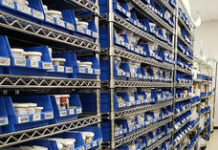A recent study has demonstrated that most breast cancer centers in the United States do not follow the same guidelines that national medical societies recommend.
The United States Preventive Services Task Force (USPSTF) recommends getting a mammography screening every two years for women aged 50 to 74. The American Cancer Society, on the other hand, recommends annual screening for women aged 45 to 55, followed by annual or biennial screening after that.

The decision to undergo screening more often or at an earlier age than these organizations recommend should be made on an individual basis depending on a person’s risk factors. But now there’s evidence that breast cancer centers may be recommending this screening earlier and more often than necessary.
The cross-sectional study was published in JAMA Internal Medicine. Jennifer L. Marti, MD, of the divisions of breast cancer and endocrine surgery at the department of surgery at Weill Cornell Medicine, along with her colleagues, reviewed the online screening recommendations of 606 breast cancer facilities across the nation. 542 of these facilities were accredited by the National Accreditation Program for Breast Centers, while 47 had National Cancer Institute (NCI) designations, and 17 had both statuses.

Article continues below
Our Featured Programs
See how we’re making a difference for People, Pets, and the Planet and how you can get involved!
The researchers discovered that 119 facilities did not specify an age at which mammography screening should begin, how often it should be done, or any information on discussions patients should have with their physicians about the risks and benefits.
Of the 487 facilities that did include some of this information on their websites, many of them were still missing some of these vital details. Only 431 of those facilities mentioned a starting age, 429 mentioned starting age and screening interval, and 56 encouraged women to discuss screening with their doctors. Of the 429 centers that recommended a starting age and screening interval, a whopping 347 offered recommendations that differ from the guidelines put forward by national medical societies.

“Women should decide if beginning screening at age 45 to 50, or earlier at age 40, is best for them,” says Dr. Marti. “Beginning at age 50, and undergoing screening every 2 years, is supported by the USPSTF, which is in line with most breast cancer screening recommendations around the world.”
The dangers of conducting screening too early and often include extra costs, low-value care, false-positive findings, unnecessary biopsies and operations, patient distress, and overdiagnosis and overtreatment of “indolent cancers,” meaning the cancer is unlikely to become symptomatic or progress quickly. Often, the benefits of screening mammography are overestimated, while the risks are underestimated.

The disparity between national guidelines and the recommendations coming from individual breast cancer screening centers can also cause tension, confusion, and anxiety for patients.
“Breast cancer centers with clear financial benefits from increased mammography rates may wish to reconsider offering recommendations that create greater referral volume but conflict with unbiased evidence-based USPSTF guidelines and have the potential to increase harms among women,” the researchers write.
Dr. Marti adds that more research is needed, but an ongoing trial called the Women Informed to Screen Depending on Measures of Risk (WISDOM) “may help determine appropriate screening intensity for individual patients.” Dr. Marti also hopes to see more research done on visual decision aids that illustrate the benefits and risks of screening, as well as the guidelines for Black women, who have been historically underrepresented in trials.
![]()
Provide Mammograms
Support those fighting Breast Cancer at The Breast Cancer Site for free! →
Whizzco Source






